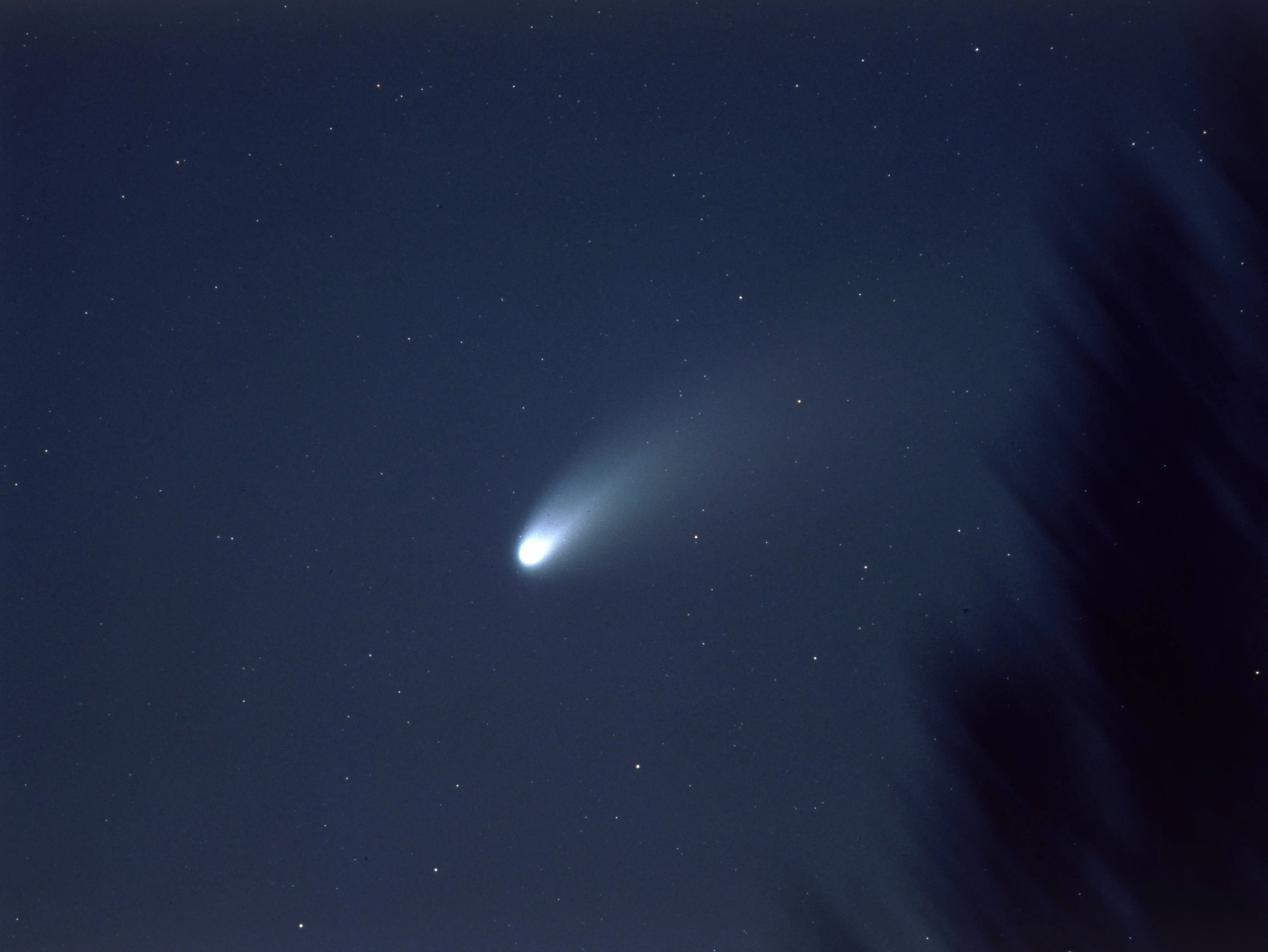3I/ATLAS surprises scientists with a huge jet aimed at the Sun—what does it really mean?
-
 The Comet Hale-Bopp passes across the night sky, 1997. (Photo by Space Frontiers/Hulton Archive/Getty Images)
The Comet Hale-Bopp passes across the night sky, 1997. (Photo by Space Frontiers/Hulton Archive/Getty Images)The question of whether 3I/ATLAS is a normal comet or an alien probe still doesn’t have a strong answer. Scientists are very interested in this new object from another star system because of the strange discoveries they are finding about it.
According to Harvard scientist Avi Loeb’s writings, two British astronomers, Frank Niebling and Michael Buchner, took a new, very detailed photo of the interstellar object 3I/ATLAS between 5:08 and 5:22 UT on November 9, 2025. They used two telescopes and combined five long exposures (each 3 minutes) to create a clear image.
The picture shows three main jets, two “anti-tail” jets pointing toward the Sun and one long tail stretching away from the Sun. The tail is about 2.85 million km long, and the sunward jets are around 0.95 million km long. This is a thousand times larger than what the Hubble Space Telescope saw in July.
What do the jets pointing towards the Sun indicate about 3I/ATLAS?
If we take a look at the images captured on November 8, we see around seven bright jets “shooting out” from 3I/ATLAS in different directions. Some even point toward the Sun, which is unusual. Avi Loeb said these jets might be thrusters, like those used to steer a spaceship. However, he also admitted another possibility that they could simply be jets of gas and dust from melting ice on the surface, a common phenomenon with comets.
Talking about what the jets could mean, Loeb doesn’t have a confirmed answer. But he did mention two possibilities stated above. In his blog, his statement read,
“Is the network of jets associated with pockets of ice on the surface of a natural cometary nucleus or are they coming from a set of jet thrusters used for navigation of a spacecraft? We do not know.”For a normal comet, gas usually escapes at only 0.4 km per second. Based on that, the jets must have been blowing for one to three months to grow this large. But Loeb noticed that the anti-tail jets are unusually dense. Loeb said the solar wind moves about 400 km per second, which is 1,000 times faster than gas coming from a normal comet.
But in 3I/ATLAS, the anti-tail is a million times denser than the solar wind. It is extremely uncommon for a natural comet. From this, Loeb estimates that 3I/ATLAS could be more than 10 km wide and weigh over 50 billion tons, a million times heavier than the first interstellar object, Oumuamua.
Scientists say that in a normal comet, these strong jets mean it must have lost a lot of its material after passing close to the Sun. Loeb suggests that if 3I/ATLAS is using technological thrusters (like rocket engines), it could create these jets using far less mass, because rockets and ion thrusters shoot out gas much faster than natural comet vents. That means it could be an artificial object, not a natural one. So, it could move the same way without losing much mass, because thrusters can push faster and use less fuel than a natural comet.
Upcoming studies with spectroscopic instruments (which analyze light) will soon measure the speed, composition, and strength of the jets. These results could finally reveal whether 3I/ATLAS is a natural comet or a piece of alien technology.
At the moment, 3I/ATLAS is about 326 million km away from Earth. When it gets closest on December 19, it will still be 269 million km away. So no spacecraft can reach or study its jets directly. Even NASA’s Juno (around Jupiter) and ESA’s JUICE spacecraft are too far to capture any particles.TOPICS: 3I/ATLAS
- What happened to 3I/Atlas? Interstellar comet reappears without a tail after passing behind the Sun
- After weeks out of sight, comet 3I/Atlas reemerges for viewing — here’s what astronomers are noticing now
- Interstellar comet 3I/ATLAS shows extended halo and distinct jet features
- First radio detection of 3I/ATLAS reveals OH absorption signals